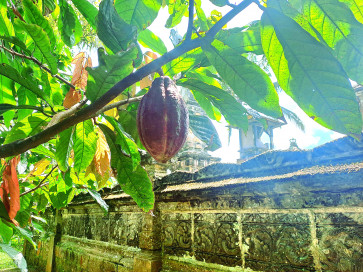Popular Reads
Top Results
Can't find what you're looking for?
View all search resultsPopular Reads
Top Results
Can't find what you're looking for?
View all search resultsWhat if protest in Central Java small town could be a warning for Jakarta elite?
With a population of a little over 1 million people, the impoverished regency is mostly known for its stories of black magic and export of roasted ground nut.
Change text size
Gift Premium Articles
to Anyone
The coastal city of Pati in the northern part of Central Java is probably the least well-known regency in the province.
With a population of a little over 1 million people, the impoverished regency is mostly known for its stories of black magic and export of roasted ground nut.
Yet, beneath the façade of its idyllic rural setting, Pati has a long history of resistance and rebellion that had made the place the graveyard of political and imperial ambition of local powers.
In recent years, farmers in the southern part of Pati, who tilled the land along the Kendeng mountains, were engaged in a protracted non-violent resistance against the plan to set up a cement factory in the area.
The resistance movement, which started in 2011 and culminated with the women of Kendeng setting their feet in cement, brought a spotlight to possible environmental destruction in the area from industrial activity and prompted investors to reconsider their plan.
Indonesian Democratic Party of Struggle (PDI-P) politician Ganjar Pranowo, who served as Central Java governor during the years of protest, suffered politically in the last presidential election in part due to his bumbling response to the Kendeng issue.
Established in the early 17th century, Pati began as a territory seceding from the Mataram Kingdom and the city’s founding myth was the story of the fierce battle between the soldiers under local regent against the mighty forces of the Southern sultanate.



















